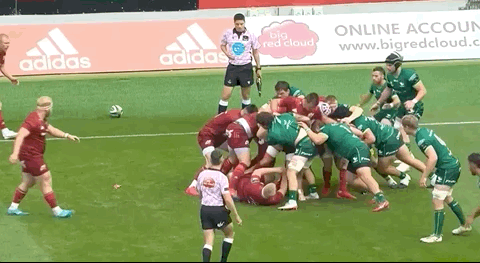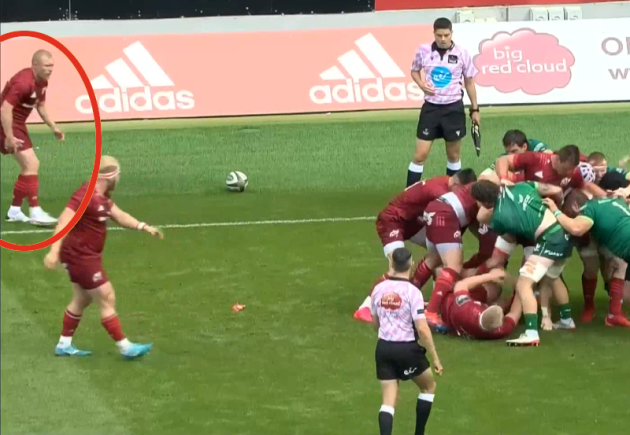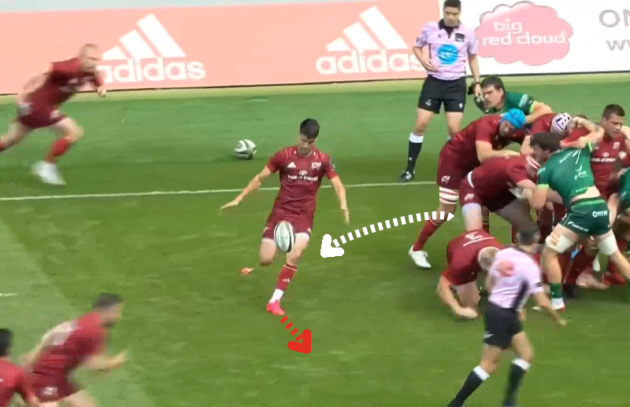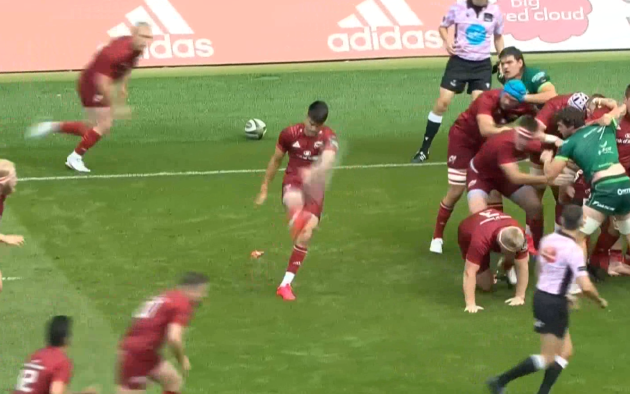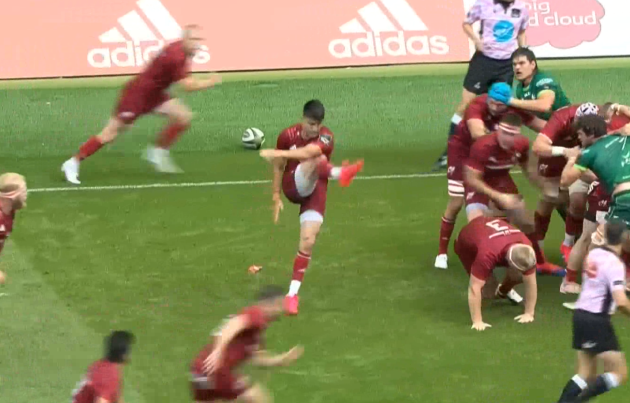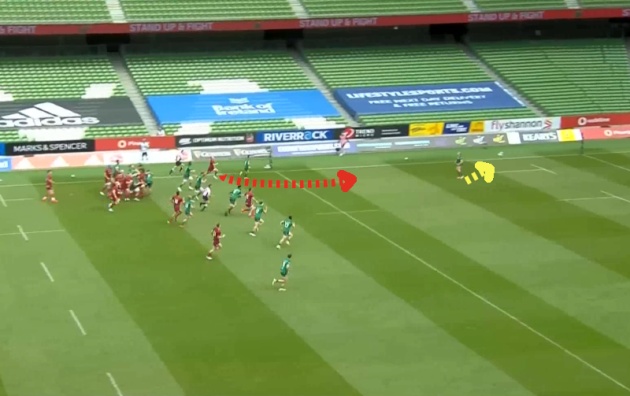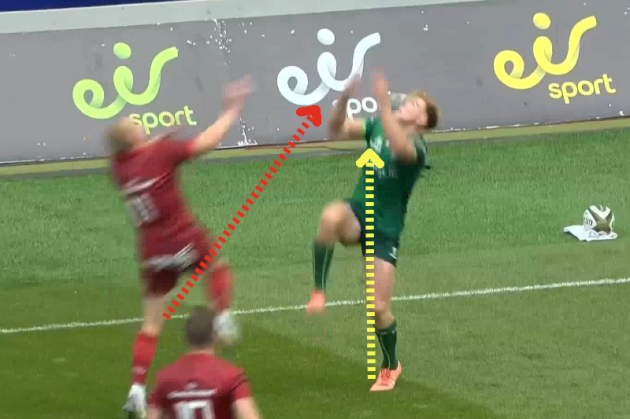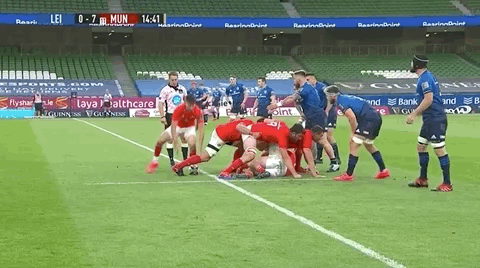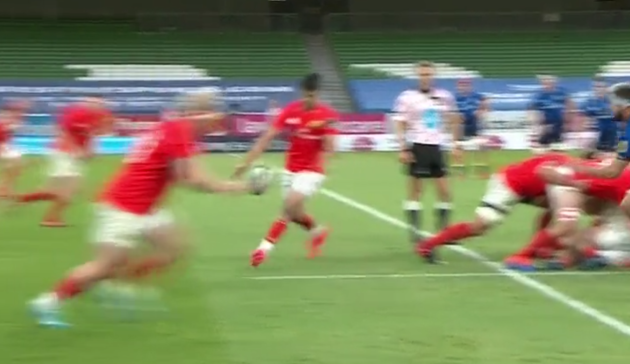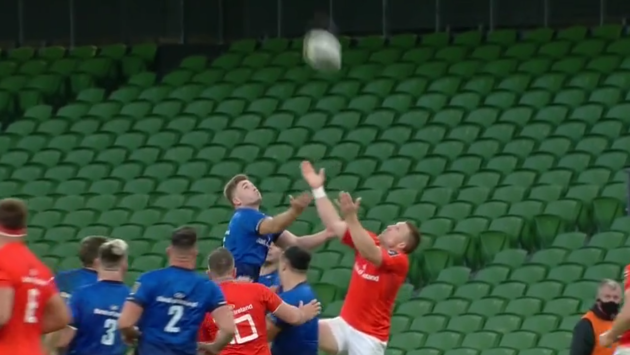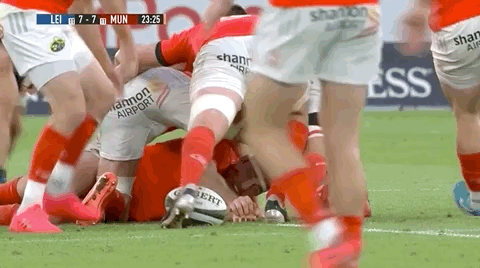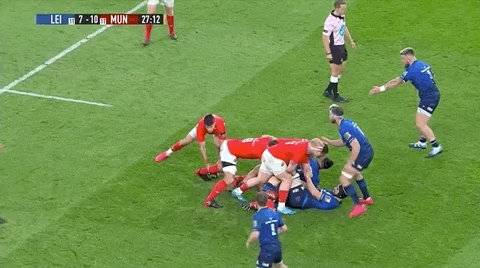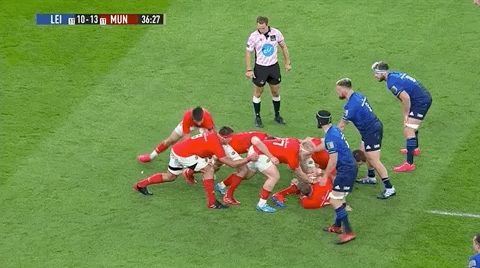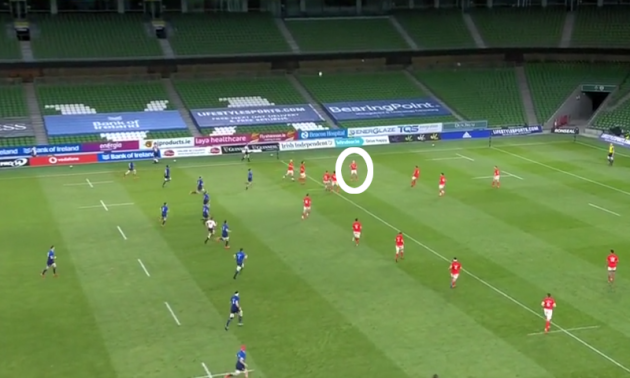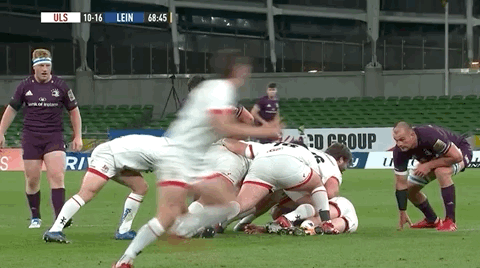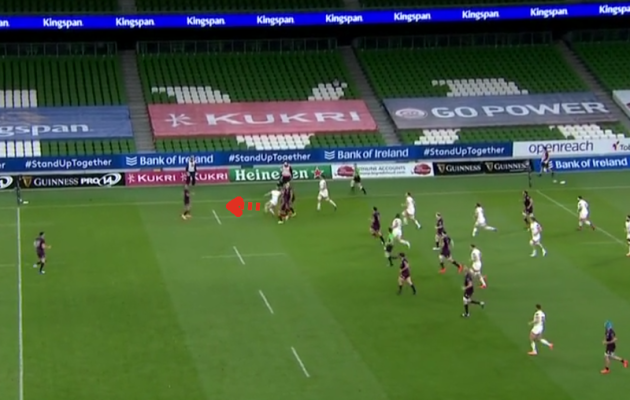BOX-KICKING HASN’T gone away, even if it remains a bête noire for many rugby supporters.
We saw in last year’s World Cup just how important box-kicking can be as the Springboks leaned heavily on Faf de Klerk’s efforts with the boot on their way to glory in Japan.
The box kick is also still a key weapon in Conor Murray and Munster’s armour and it could feature centrally in Friday night’s Guinness Pro14 semi-final clash with Leinster.
Two weekends ago, Munster had great success under Murray’s excellent kicking against Leo Cullen’s side and they looked to build on the theme yesterday against Connacht.
While Murray’s box kicking usually comes from inside his own half of the pitch, we saw a very clever use of the tactic from Munster in Connacht’s half early in the game.
[Click here if you cannot view the clip above]
Munster’s maul has made progress before John Ryan falls to the ground and referee Frank Murphy tells them to use the ball.
In what is clearly a planned play, Murray then goes into his box-kicking routine as Keith Earls [red below] initially lines up outside the touchline to give himself space to chase the kick.
Box kicking from the back of a maul is different to doing so from a ruck, where the ball is usually static on the ground, but Murray’s good habits are evident here.
Removing the ball from the maul, he takes three short steps back downfield to negate the danger of a Connacht hand blocking his kick.
Murray’s plant foot is parallel to the Connacht tryline as he drops the ball from just below waist height, keeping his head down, eyes firmly fixed on the bottom of the ball where he wants to strike it.
He stays tall throughout the kicking process, rather than hunching down over the kick, which ensures he can take full advantage of his height.
Murray flexes his right leg at the knee and then swings it through at the ball with his leg straight, getting real power into the kick as he lofts it skyward.
Murray fully kicks through the ball with his head still down, using the full extension of his kicking leg as he rises up onto the toes of his left foot, which briefly comes up off the ground…
… before Murray rotates through to land facing in the direction he wants his kick to go.
As he then backs away to cover the backfield in the event that Connacht win the aerial contest and kick back at Munster, we can see that Murray’s box kick has been calibrated perfectly.
Connacht wing Colm de Buitléar [yellow below] is in a nightmare situation as Murray’s kick travels around 25 metres upfield and hangs in the air for almost five seconds – ideal criteria for getting a good chase on – as he the Connacht man has to back downfield to deal with it.
The ball’s landing point is in Connacht’s five-metre channel, again underlining the accuracy of Murray’s kick, allowing Earls to go after it in the air as he slaloms infield to evade the ineffective ‘escorting’ work from Connacht.
Connacht will feel they could have bought de Buitléar more time here by Caolin Blade and Eoghan Masterson – who are in that shortside – delaying Earls’s chase, but de Buitléar is left compromised.
Having backed downfield, de Buitléar has to jump straight up in an attempt to field the ball, whereas Earls is running onto it and leaping up through his fielding effort, allowing him to get above de Buitléar.
Eoin Toolan, a regular guest on our Monday rugby podcasts for members of The42, has previously explained the importance of jumping “through the ball, not to the ball” in these aerial contests and we get a perfect example here.
The surprise element of Munster’s box kick is obviously vital as de Buitléar isn’t expecting to have to deal with an aerial attack and then has to back downfield.
Earls’ chase is excellent and Munster come up with the ball, helping them to pile early pressure on Connacht and leading towards the yellow card for Conor Oliver just over two minutes later.
Leinster will have taken note after their own struggles under Murray’s box-kicking two weekends ago.
Munster regained four of Murray’s eight contestable box-kick efforts in their 27-25 defeat, with all of those kicks coming from inside their own half, most of them exits as Munster cleared from their defensive territory.
Losing 50% of those contests to Munster will have been unacceptable for Leinster and there is no doubt they’ll have been focusing on this area of the game since fullback Jordan Larmour had a tough evening under the high ball.
[Click here if you cannot view the clip above]
We see Munster’s first win above, as Murray launches an excellent box kick upfield, again around 20 to 25 metres long and with over four seconds of hang time.
The technique kicking from the ground is slightly different, with Murray stretching his right foot back to where he will step…
… before taking one big step back from the ruck, planting his left parallel to the tryline…
… and striking up through the ball.
Murray doesn’t have any ‘blockers’ ahead of the ball here on the edge of the ruck to provide security but his composure is evident as he still executes his kick flawlessly.
With Munster on the right-hand side this time, it’s Andrew Conway who chases and though Leinster’s escorting players get in his way, he shows his determination to get an arm up into the contest.
Coming from the backfield, Larmour briefly hesitates as he judges the flight of the ball and then looks to move forward again, but does so without the kind of conviction he shows at his very best.
Larmour ends up getting off the ground a hint too early and leaves himself stretching out to try and field the ball, as we can see above, rather than jumping up and through it over Conway.
With Conway getting a hand in, the ball goes loose and Robbie Henshaw knocks it on in the ensuing scramble, handing Munster a scrum and a big success under Murray’s first box kick.
Munster repeat the trick over on the left-hand side and further upfield soon after as Larmour knocks-on this time.
[Click here if you cannot view the clip above]
We can see above that Henshaw actually attempts to field the ball as he moves back downfield for Leinster.
We obviously can’t hear the communication, or lack thereof, but it’s obviously Larmour’s ball to field as he comes forward and perhaps the chat wasn’t good enough in this instance. With Earls sticking an arm up into the mix and Larmour misjudging his leap again, the ball bounces forward off the Leinster fullback’s chest.
From the ensuing scrum attack, Munster win a penalty and kick three points, making it a costly aerial loss.
Just a few minutes later, Munster make it three from three under Murray’s contestable box kicks as Conway gets there ahead of the hesitating Larmour and bats the ball back.
[Click here if you cannot view the clip above]
Murray then box kicks again after Munster regather possession but it’s too long on this occasion and Larmour fields it under no direct pressure.
But there’s still time for one more Munster success in this department before half-time as Conway chases superbly once again.
[Click here if you cannot view the clip above]
With Larmour beaten by Conway, Henshaw has to react well here to tackle the Munster wing out over the touchline, preventing the southern province from playing away to their left.
All of the examples above show how the kick-chase is as important as the kick itself and Leinster also clearly discussed this at half-time.
Their restart of the second half was directed straight on top of Conway…
… which meant the right wing had to carry the ball and was therefore not on his feet to chase Murray’s exiting box kick.
Without Conway bombing forward to compete with him, Larmour is finally able to field the ball cleanly for Leinster.
[Click here if you cannot view the clip above]
Murray only box-kicked contestable twice more for Munster in this game and neither one of them was dealt with ideally by Leinster, James Lowe batting the first one backwards and then lock Ryan Baird taking matters into his own hands to rise and catch the second one overhead as he came back downfield.
Murray is one of the box-kickers in the game but it’s worth noting that Craig Casey has also been working hard on his skills in this area and can hang up contestable kicks too.
Munster will have been encouraged by their successes over the last two weekends and seem likely to look to the same source at times this Friday too, even if it appears Leinster may have a different man at fullback.
Larmour’s troubles under the high ball and right wing Dave Kearney’s hamstring injury mean the Leinster back three could well be reshuffled, with Rob Kearney potentially starting at fullback and Larmour shifting out to the number 14 shirt.
34-year-old Kearney made his first appearance for Leinster since 15 February on Saturday night against Ulster and showed early signs of rust before settling into the game and using his strong left foot to good effect in the kicking game.
Ulster’s kicking was largely long and not contestable but Kearney did have one aerial contest in this game, when he came out second best.
[Click here if you cannot view the clip above]
Bill Johnston does an excellent job for Ulster here, working all the way around the corner to chase John Cooney’s box kick on the right-hand side.
Leinster will be disappointed that their escort allowed Johnston [red below] to slip through beyond them…
… and into the one-on-one with Kearney, where Johnston gets off the ground and bats the ball backwards with his right hand.
The match officials are happy that Johnston has played the ball and Leinster have to react to another failing under an opposition box kick, with wing Hugo Keenan also knocking-on under another Cooney kick in this game.
Keenan is another option for Leinster in the back three on Friday and he has been good at fullback in this 2018/19 season, while Cian Kelleher had a good outing against Ulster on Saturday. Fergus McFadden and Adam Byrne have been ruled out through injury.
While Kearney loses out in the example above, there are few doubts about his quality in the air. The veteran fullback has some of the greatest aerial skills Irish rugby has ever seen and has long been regarded as a leading expert in this area within the entire game.
Of course, a fullback is not picked based on aerial skills alone so Leinster have plenty to weigh up, but it might just be that the man who made his debut back for the province back in 2005 still has a big role to play almost 15 years later.
